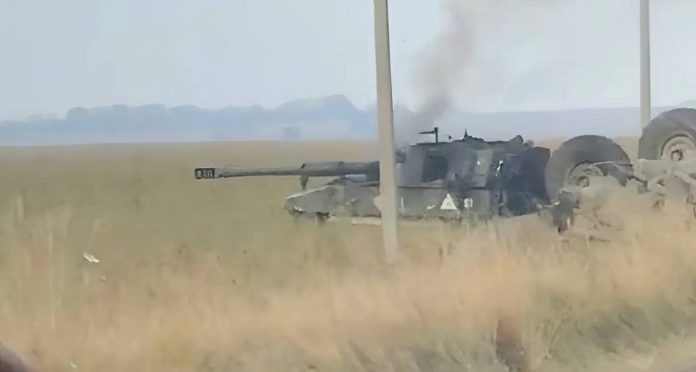The offensive by the Ukrainian Armed Forces (AFU) in the Kursk region completely lost its snowball effect, turning into another section of the front line, while media outlets are sharing footage of the ongoing retaliatory offensive by Russian troops.
Ukrainian media report the capture of Borki by the Russian 810th Guards Naval Infantry Brigade in the south-eastern section of the Kursk front. Fierce fighting continues in the Glushkovo area. Russian troops also advanced up to 3.5 kilometres ahead of the Oskil River.
Meanwhile, the AFU advanced in Toretsk. However, the Russians responded by advancing in the Vuhledar direction. Some sources report the capture of a local mine. Soldiers carried out an assault, advancing in and around the Pivdennodonbaska 3 coal mine. Media shared footage of the assault and high-explosive aerial bomb strikes.
The town of Vuhledar, strategically important for Ukraine’s entire defence, risks being cut off, with the garrison, defending it for 2½ years, shattered during the assault. Moreover, media outlets are reporting a gradual deterioration of the AFU’s situation in Niu-York (former Novhorodske) fortification area and east of Zhelanne, Donetsk region.
Media also share footage of a Russian Inokhodets drone striking a US M270 Multiple Launch Rocket System (MLRS). As a result of the strike, the launcher, ammunition, escort vehicle, and maintenance personnel were eliminated.
Kursk incursion
Military experts assume that the AFU will continue to carry out targeted strikes near the village of Glushkovo and other locations. Having broken through certain defence hubs, Ukrainian troops may find themselves in a difficult position in case they need to retreat.
Meteorological services are also predicting a rainy season in a week, which will further complicate military operations in the region, as most roads from Sudzha to Sumy are not paved.
Recently, global media have been actively covering the events around the Glushkovsky district in the Kursk region. Media outlets are discussing the strikes on the bridges and the subsequent actions of the AFU in the district. Meanwhile, experts note that the long delays between the strikes on the bridges and the start of hostilities make the operations predictable. Thus, some of the analysts believe that a strike on the town of Veseloe will be followed by a strike in the Tetkino area.
Marines from the Russian 810th Brigade shared a video of another seized vehicle, a Stryker APC, in the Kursk region. Last time they managed to capture the High Mobility Multipurpose Wheeled Vehicle (HMMWV).
Greetings! We are from Russia. We are pulling another vehicle.
Tense hostilities
Despite reports of alleged rotations and the withdrawal of the AFU’s best-trained units and their replacement by mobilised troops, the situation in the Kursk region remains quite tense. The Ukrainian troops reportedly have no plans to withdraw from the occupied territories.
CNN recently published an article stating that Ukraine’s Kursk offensive “was seen as a major success, but it came at a huge cost.” Ukrainian commanders faced accusations that ordinary soldiers were being thrown onto the front line without a specific objective.
The following video shows the destruction of the 155mm Self-Propelled Howitzer M109, an M1126 Stryker APC, and passenger cars at the entrance to the village of Gogolevka, Sudzha district in the Kursk region.
The Ukrainian military reportedly faced a problem with navigation and communication between units. Due to the suppression of GPS and cellphone signals, the Ukrainians relied on the Starlink internet service, but it did not work in the area where the AFU had advanced. Media also shared footage of AFU soldiers camouflaging an overturned armoured jeep in the Kursk region.
Some media, including Ukrainian and Russian, reported that the AFU had broken through the defences on the Russian border largely not due to the effect of surprise, but at the cost of huge losses of manpower and equipment.
